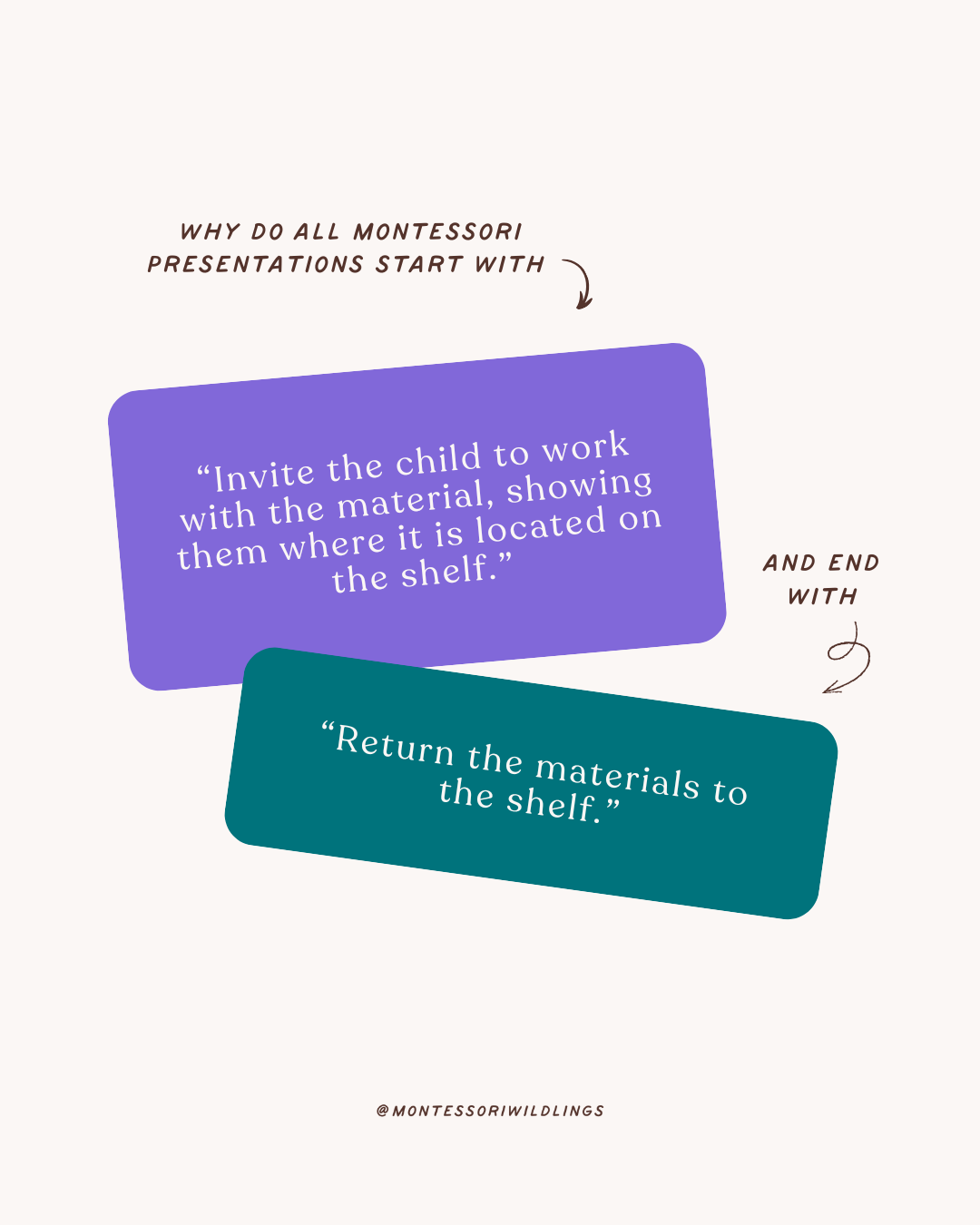Why do so many Montessori Presentations start with “Invite the Child”?
If you download any Montessori albums or curriculums, you may notice there’s a very specific type of language used in the presentations - especially at the beginning and at the end.
So why do most presentations start with the words “invite the child”?
It’s because one of the core facets of Montessori is respect, and respectful language means we offer an invitation rather than a command. If they don’t want to do something, we respect that and consider introducing it another time. Or we might simply say, “Okay, I’ll work on this and you can watch if you like,” and begin the presentation ourselves. There are many reasons why a child might not feel ready at that particular moment - they may be tired, unsure, or even intimidated by how a material looks. By modelling it calmly, they can observe and realise that what once felt overwhelming might actually be enjoyable and super interesting!
That brings me to the use of the word “work.” This is also intentional. Everything a child does in a Montessori environment is considered work, because it truly is work for them. Just like we use energy and effort in our adult lives, children use enormous concentration and determination when they learn - even when the activity looks simple or playful, like painting an abstract picture.
Then there’s the phrase “show them where it’s located on the shelf.” This matters so much because our aim is to foster independence and a sense of ownership over their environment. The child should know where the material lives in their environment so they can choose it freely whenever they feel ready. In the long run, this actually lightens the load on the adult too - they can simply get what they need, when they need it without having to ask us for it.
And lastly, we come to the closing phrase: “Return the materials to the shelf.” This final step is essential. It completes the cycle of activity. We finish our work, tidy it, and return it to its place. It’s a gentle rhythm that supports both independence and respect for the environment.
I hope this helps you feel more grounded in the language of Montessori, and more confident in weaving it into your own home or classroom!
